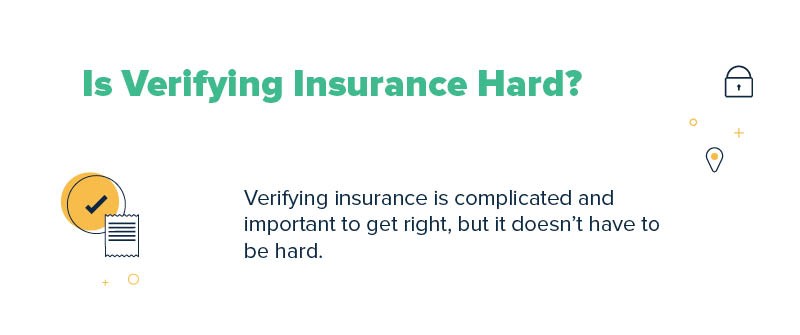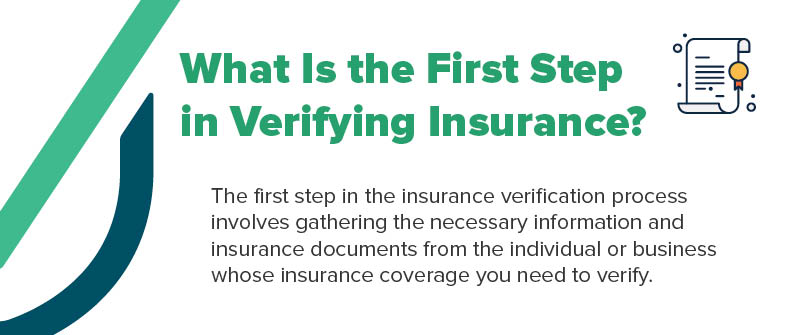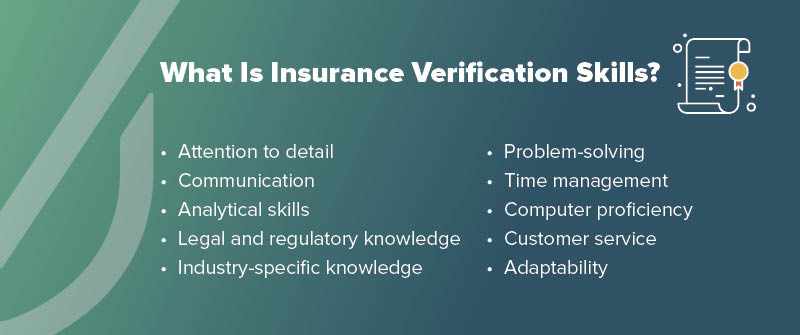
Understanding how to verify insurance coverage is a crucial part of doing smart business—and a non-negotiable pillar of risk management. Whether you’re working with vendors, contractors, tenants, or service providers, insurance verification helps ensure everyone is protected, compliant, and operating from a place of financial security.
With the average claim costing thousands, and the potential for disputes, delays, or legal exposure when proper coverage isn’t in place, verifying insurance isn’t just a best practice. It’s a business imperative.
This process is especially important in high-liability industries like construction, property management, and vendor services, where one mistake or misunderstanding can lead to costly consequences. Without proper verification protocols, your company may unknowingly accept financial responsibility for damages, accidents, or lawsuits tied to uninsured or underinsured third parties.
In this installment of our Certificates of Insurance 101 series, consider this your complete guide to mastering the insurance verification process. From understanding what to look for in a COI to streamlining your operations with digital tools or third-party support, we’ll walk you through everything you need to know to protect your business—and verify with confidence.
Why Is Insurance Verification Important?
Those who enter business relationships without first making sure their new partner, vendor, or contractor is covered may face costly repercussions. Ultimately, suppose you don’t take the necessary precautions to verify compliance and ensure your third-party hires have adequate insurance before beginning a job with you. In that case, your company may be held financially liable for anything that goes wrong.
That is one of the many reasons that insurance verification is so important in modern-day business partnerships.
What Are The Benefits of Effective Insurance Verification?
Understanding the significance of insurance verification is the first step toward appreciating its role in safeguarding the interests of your business. Beyond the fundamental aspect of risk management, the process of meticulously verifying insurance coverage yields a multitude of benefits that extend across various facets of business operations. Here’s how effective insurance verification contributes to a more secure, compliant, and reliable business environment:
- Risk Reduction: At its core, insurance verification serves as a preventive measure against unforeseen financial liabilities. By ensuring that all parties involved in your business operations carry adequate insurance, you effectively mitigate the risk of bearing unexpected costs due to accidents, damages, or negligence. This proactive approach not only preserves financial health but also instills a sense of security within your business ecosystem.
- Enhanced Compliance: In today’s regulatory landscape, compliance is not just about adhering to laws—it’s about demonstrating responsibility towards your stakeholders and the community at large. Effective insurance verification ensures that your business operations align with industry standards and legal requirements, thereby avoiding potential fines and legal entanglements. This adherence to compliance standards further solidifies your reputation as a trustworthy and responsible entity.
- Business Continuity: Unexpected disruptions can be detrimental to the momentum of your business operations. However, by verifying the insurance of your partners, vendors, and contractors, you ensure that any interruptions caused by insurable events are swiftly managed and resolved. This continuity planning aspect of insurance verification means that your business remains resilient in the face of challenges, maintaining operational fluidity.
- Stakeholder Confidence: Whether it’s your employees, partners, investors, or clients, confidence in your business practices is paramount. Effective insurance verification sends a clear message that you prioritize safety, responsibility, and due diligence. This, in turn, strengthens trust in your business relationships, fostering a climate of mutual respect and assurance.
- Financial Security: Insurance verification is a critical component of financial planning and security. By confirming that all involved parties are adequately insured, you protect your business from potential claims and liabilities that could otherwise impact your financial stability. This layer of security enables you to allocate resources more effectively, invest in growth opportunities, and navigate the business landscape with confidence.
In essence, effective insurance verification is not just a procedural task—it’s a strategic approach to business management that promotes safety, compliance, resilience, trust, and financial health. By integrating thorough insurance verification practices into your operations, you pave the way for a more secure, compliant, and prosperous business journey.
Is Verifying Insurance Hard?
Verifying insurance is complicated and important to get right, but it doesn’t have to be hard. Here are some factors that may affect the difficulty of your insurance verification efforts:
- Type of insurance. Verifying personal insurance like auto or home policies is fairly simple. However, verifying complex commercial insurance, such as professional liability or pollution insurance, can be more complicated due to specific policy details and exclusions.
- Documentation. Insurance verification involves obtaining and reviewing insurance documents (namely, certificates of insurance or COIs) from relevant parties. The accuracy and completeness of the COIs you receive will also affect the ease of this process.
- Complex policy terms. Some types of coverage come with complex terms and conditions. Understanding the nuances of coverage, endorsements, and limitations may require expertise—sometimes beyond the scope of your internal team.
- Continuous monitoring. Insurance verification doesn’t stop the first time you confirm someone’s coverage. Suppose you are continuing to work with someone in an ongoing business relationship. In that case, you’ll need to continuously monitor their insurance coverage to ensure it stays sufficient, which can quickly become time-consuming.

What Is the Easiest Way To Verify Insurance?
For some policies and industries, insurance verification is simple. For others, such as when legal and contractual compliance is essential, a more methodical approach may be necessary. Noting the fact that coverage is often complex, here are a few of the “easy” ways to verify someone’s insurance:
- Online verification tools. Some insurance providers will offer digital portals where you can verify insurance coverage online if you provide relevant information for the specified individuals or businesses.
- Requesting proof of insurance through COIs. This is the standard method of insurance verification. It involves requesting that an insured party provide you with their proof of insurance through a COI, then verifying its accuracy and adequacy for your needs.
- Third-party services. Many companies use third-party services or software to streamline the insurance verification process, making verification much more efficient.
What Is the Insurance Verification Process?
Now that we’ve discussed a bit about the necessity of the insurance verification process and the rigor often involved in it let’s walk through a typical insurance verification process when following the most traditional route of using COIs.
A COI, also known as a business certificate of insurance, is a document used for exactly the purposes we’re discussing: insurance verification. Essentially a one-page screenshot of an insurance policy, COIs are free to generate from the insurer providing you with coverage and contain all of the pertinent information to a hiring (or otherwise verifying) party.
The insurance verification process typically involves confirming the validity, accuracy, and sufficiency of an individual’s or business’s insurance coverage through various steps. Let’s go through them.
What Is the First Step in Verifying Insurance?
The first step in the insurance verification process involves gathering the necessary information and insurance documents from the individual or business whose insurance coverage you need to verify. Begin collecting information about them, including their name, contact information, policy number, insurance company, and the type of relevant coverage they have (e.g., health, auto, liability, etc.). Generally, this information should have been communicated by you in the COI request form you sent, asking them to provide you with this proof of coverage.

What Are the Other Key Steps in Insurance Verification?
After requesting a COI from the party you need to confirm the coverage of and gather their insurance information and documentation, you can move forward with the other steps of insurance verification.
Carefully review the Certificate of Insurance Services document, which provides details about the insurance policy, including coverage limits and policy expiration dates, to verify that the information is correct. You can also contact the insurance provider listed on the COI to verify and cross-check the provided client information.
Next, you’ll want to verify compliance (particularly important in industries subject to specific insurance mandates, like construction or healthcare). Ensure that the insurance coverage complies with any legal or regulatory requirements. If insurance verification is part of a contractual agreement, also review the contract to understand the insurance obligations and ensure that your third party complies with these terms.
As you go through the verification process, be sure to maintain records, including copies of insurance documents, communications with the insurance provider, and any discrepancies or changes in coverage. Implement a system of continuous monitoring of the policy, especially for long-term projects, to ensure that coverage stays valid throughout the business relationship. If any changes in coverage occur, such as policy renewals or endorsements, ensure that all relevant parties are notified of them.
Additionally, in the cases where an individual or business doesn’t meet your insurance requirements, your business should have a planned response to non-compliance in place. Typically, this involves requiring them to obtain sufficient coverage to be hired or modifying the terms of your agreement.
What Is the Correct Order of the Insurance Verification Process?
The exact steps and order to verify insurance eligibility can vary depending on the industry and specific requirements, but here is an overview of how it typically goes:
- Gather information.
- Review insurance documents.
- Contact the insurance provider.
- Cross-check information.
- Check for endorsements.
- Compliance verification.
- Contractual obligation verification.
- Document verification.
- Continuous monitoring.
- Notification of changes.
Top Mistakes to Avoid in Insurance Verification
Even with a solid process in place, it’s easy to fall into a few common traps that can leave your business exposed. Whether due to oversight, time constraints, or misunderstanding the documents you’re reviewing, these missteps can lead to major compliance and financial risks. Here are the most frequent mistakes to watch out for when verifying insurance coverage:
Accepting expired or incomplete COIs
Always confirm the effective and expiration dates listed on the certificate. A COI may appear legitimate at a glance but still be outdated or missing critical details such as policy numbers or coverage limits.
Failing to request additional insured status
If your business expects to be protected under a vendor or contractor’s policy, you must confirm that you’re listed as an additional insured. Without this endorsement, your coverage in the event of a claim could be limited—or nonexistent.
Not checking for exclusions and endorsements
Even if coverage types appear to be in place, exclusions and policy modifications can severely limit protection. Be sure to review all endorsements and amendments to understand what’s not covered.
Assuming one-time verification is enough
Insurance verification is not a one-and-done task. Coverage can lapse, change, or be canceled at any time. Ongoing monitoring ensures you’re not relying on outdated or invalid policies as projects or relationships evolve.
Not tracking renewal dates
Letting a COI expire without a replacement on file leaves your business exposed. Implement a reliable system to track renewal dates and prompt follow-ups so you never miss a beat on active coverage.
Avoiding these common mistakes is a key part of an effective risk management strategy—and can save your team countless hours, dollars, and potential legal headaches down the line.
What Questions to Ask When Verifying Insurance?
Insurance verification is usually done following the steps outlined above rather than a back-and-forth Q&A. However, here are a few of the questions you’re essentially trying to answer through the insurance verification process:
- Do you have [specific type of] insurance coverage? You should be asking a vendor to provide evidence of a certain kind of policy as it pertains to the job you’re hiring them for.
- Is the insurance policy active? Verify that the policy is active and hasn’t lapsed.
- What are the coverage limits? Find out about the policy’s coverage limits to ensure they meet the necessary requirements.
- What is the policy’s effective date? Verify when the coverage became effective.
- When does the policy expire? Determine when the coverage expires so you can ensure ongoing coverage.
- Are there any endorsements or modifications to the policy? Sometimes, vendors choose to modify their coverage, and sometimes, you, as the hiring company, can ask them to. Check if they have any modifications in place or request that they make them if necessary.
- Are there any exclusions or limitations in the policy? Find out about any exclusions or limitations within the policy that may affect coverage.
What Are Insurance Verification Skills?
As you may now have gleaned, a lot goes into insurance verification. Here are some key skills associated with insurance verification:
- Attention to detail
- Communication
- Analytical skills
- Legal and regulatory knowledge
- Industry-specific knowledge
- Problem-solving
- Time management
- Computer proficiency
- Customer service
- Adaptability

How To Become an Insurance Verification Specialist
If you’re invested in the world of insurance verification and interested in stepping into a career as an insurance verification specialist, welcome! While specific requirements for becoming an insurance verification specialist can vary by industry and employer, some general education, paired with the skills we mentioned above, are a couple of identifiers of good potential candidates. From there, gaining practical experience, such as through entry-level positions in healthcare, insurance, property management, etc., can be valuable to set you on the right path.
How Can I Improve My Insurance Verification?
To improve your insurance verification process, start by keeping detailed records of everything. This ensures that, at the very least, a specialist can step in at some point to assess how your process has been going and make improvements as needed. Documentation is also important in the case of claims management, and it is a best practice to keep vendor COIs for at least five years.
Additionally, it’s essential to establish standardized procedures that work for your team. For example, lay out who is in charge of COI outreach, standards for documentation storage and naming, who is responsible for verification, what information you must collect, and the steps you’ll take in the process.
Finally, using technology is a surefire way to improve your standard of insurance verification. By hiring a team of industry-leading compliance managers with years of experience working in insurance verification, you can trust that you’re in good hands when it comes to verifying coverage, managing COIs, and ensuring contractual and regulatory compliance.
myCOI: The Insurance Verification Partner For You
Partnering with myCOI’s team of industry professionals will help you save time, reduce headaches, and maintain compliance and insurance eligibility verification across all of the vendors you work with. Call us today to learn more.